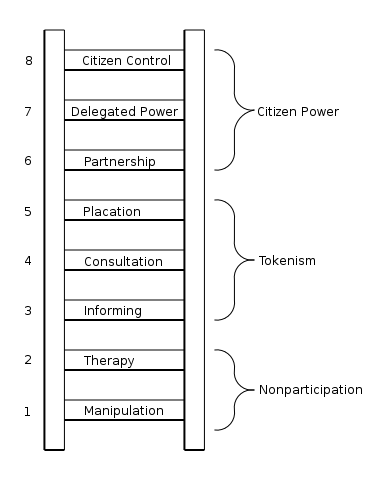 |
| Turning the camera on the audience |
A lot of community development practice handles consent based on a research/medical type of practice, which assumes participants need to be protected from being identifiable unless they explicitly waive that right, based on good knowledge of what the consequences are.
In mainstream media practice, the situation is reversed - individuals are treated as authors of their contribution and need to be credited (their moral right to be identified as the originator of material within a film), unless they explicitly waive that right. So in practice, to satisfy legal responsibilities as well as practice norms it means consent has to be fairly explicit.
This is then sometimes in tension with participation. There are usually other norms of consent and ownership in play or several overlapping sets. The way that rural Hungarians think about the ownership of a piece of music is quite different to the formal situation in terms of copyright, for example. So dragging a group of participants through a consent procedure that doesn't work for them emotionally or in terms of their own understanding and practice is not a good way to set up a good spirit of sharing and participatory work.
As I understand it, InsightShare's practice is not to use consent forms, but rather to tailor what they're doing to each community they work with. Overall they publish a set of working principles they adhere to, but the main focus is on the participants' understanding of what they're doing.
As for me, I think a good way of dealing with participatory rights for both research and for media production is to really stick to the idea of the facilitator's role as help a group produce their own film. This might require some work on how a group shares responsibility and ownership, and it might take some work to illustrate and work through consequences (doing that well is where the facilitator's duty of care is discharged). But instead of treating a group you're working with as assistants in making your film, which you can then take away and use as it's been signed off, the situation is reversed and the question is how to negotiate access to the group's film.
For example, as a researcher, exchanging your time and help in making a film for the group working towards a film they are happy to publish on a cc by basis removes some of the barriers to treating a film as research data. You don't own it, you have access to it by a legitimate pathway, provided the group who own the film have given the OK for this.
